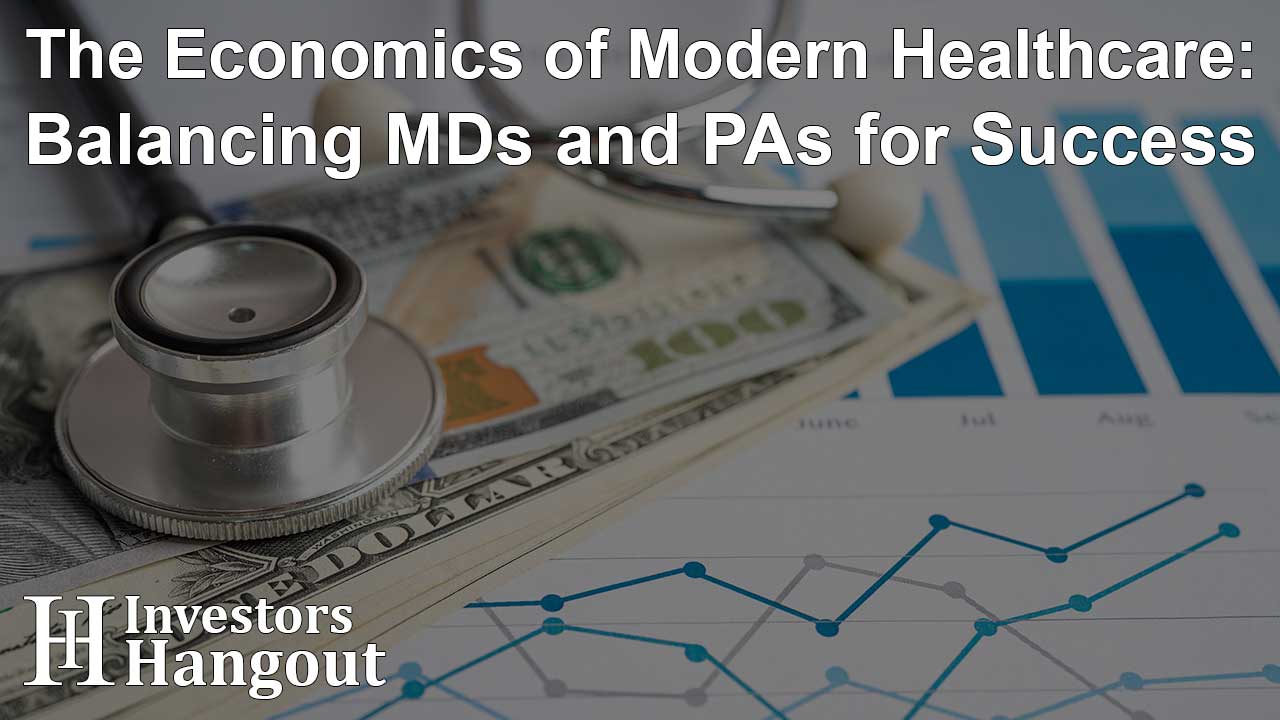The Economics of Modern Healthcare: Balancing MDs and PAs for Success

The modern healthcare landscape is undergoing a profound transformation, driven by the increasing demand for medical services and a growing shortage of primary care physicians. With an aging population and expanded healthcare coverage, the need for efficient, scalable care models has never been greater. Medical Doctors (MDs) have long been the cornerstone of patient care, but the evolving healthcare ecosystem demands a more integrated approach that includes Physician Assistants (PAs) and other advanced practice providers.
The workforce imbalance is exacerbated by the limited supply of newly trained physicians entering the field. The lengthy and costly education process for MDs contrasts with the relatively streamlined training of PAs, who can begin practicing sooner and at a lower cost to the system. This discrepancy has prompted hospitals and private practices to explore collaborative models that balance the strengths of both MDs and PAs, ensuring that high-quality care is maintained without overburdening any one segment of the workforce.
Healthcare economics now prioritize cost-effectiveness, patient outcomes, and provider satisfaction. As organizations struggle to optimize resources, the role of PAs has expanded beyond traditional support functions. Today, they serve as primary care providers in many settings, alleviating workload pressures on MDs while maintaining continuity of care. This shift raises critical questions about the long-term sustainability of the MD-PA model and its impact on patient care quality and accessibility.
The Cost-Benefit Equation in Medical Staffing
One of the primary drivers behind the increased reliance on PAs is economic efficiency. A full-time PA earns significantly less than an MD, making them an attractive option for cost-conscious healthcare institutions. By integrating PAs into patient care teams, organizations can optimize labor costs while ensuring patients receive timely medical attention. The lower salary and education expenses associated with PAs enable facilities to stretch limited budgets further while expanding service capacity.
However, cost savings alone do not determine the effectiveness of this model. The question of quality remains paramount, with concerns about whether PAs can provide the same level of care as MDs. While studies have shown that PAs can deliver high-quality care in many clinical scenarios, there are limitations to their scope of practice. Complex cases requiring extensive diagnostic interpretation, surgical interventions, or specialized expertise still necessitate physician oversight. Striking the right balance between cost efficiency and patient safety remains a challenge for healthcare administrators.
Moreover, reimbursement policies influence the financial viability of this model. Insurance companies and government programs often reimburse services provided by MDs at a higher rate than those performed by PAs. This discrepancy creates a financial incentive for organizations to prioritize physician-led care, even when a PA could handle a case effectively. Addressing these policy inconsistencies is crucial for ensuring that economic efficiency aligns with quality and access to care.
Expanding the PA Role: Challenges and Opportunities
The expanded role of PAs presents both opportunities and challenges for healthcare organizations. With training in general medicine and the ability to diagnose, treat, and prescribe medications, PAs can bridge gaps in primary and specialty care. Their adaptability makes them valuable assets in rural and underserved areas, where physician shortages are most pronounced. This flexibility enhances access to healthcare services while reducing wait times and provider burnout.
However, regulatory barriers continue to limit the full potential of PAs. Scope-of-practice laws vary by state, with some jurisdictions imposing restrictive supervision requirements that hinder PA autonomy. These regulations can create inefficiencies, forcing PAs to seek physician approval for decisions they are fully qualified to make. Efforts to modernize these policies and promote team-based care models are essential for maximizing the PA workforce’s impact.
Additionally, collaboration between MDs and PAs requires seamless communication and trust. While many physicians embrace the support PAs provide, others remain hesitant, fearing an erosion of professional autonomy or increased liability risks. Establishing clear protocols and fostering a culture of collaboration is critical to ensuring that both groups work effectively together, enhancing patient care outcomes without compromising provider roles.
Addressing the Knowledge Gap in Provider Roles
Despite the increasing integration of PAs into medical teams, many patients remain unaware of the distinctions between PAs and MDs. This knowledge gap can lead to confusion and skepticism, particularly when patients expect to see a physician but are instead treated by a PA. Transparency in provider roles is essential to maintaining patient trust and ensuring informed decision-making in medical care.
Clarifying the differences in training, responsibilities, and expertise is key to setting appropriate patient expectations. Healthcare systems and medical institutions play a critical role in this effort by actively educating both patients and staff about the unique contributions of PAs and MDs within clinical settings. This not only helps reinforce the credibility of PAs but also fosters a more cohesive, team-based approach to care, where each provider’s role is clearly understood and valued.
Furthermore, digital health platforms and patient portals offer powerful tools to address these concerns proactively. By clearly outlining provider roles, credentials, and the scope of practice within patient-facing materials, healthcare organizations can improve understanding and acceptance of PA-led care. Open communication, patient education, and informed consent are pivotal in ensuring that the growing reliance on PAs enhances, rather than detracts from, the overall patient experience.
The Future of Collaborative Healthcare Models
The evolving MD-PA relationship underscores the broader shift toward collaborative healthcare models. As demand for medical services continues to outpace physician supply, integrating diverse provider types becomes a strategic necessity. Team-based care approaches leverage the strengths of multiple professionals, creating a more resilient and responsive healthcare system.
Artificial intelligence and telemedicine further support this evolution, enabling PAs to expand their reach and capabilities. AI-driven diagnostic tools can assist PAs in clinical decision-making, while telehealth platforms facilitate remote supervision by physicians. These technological advancements empower PAs to manage more cases independently, reducing strain on MDs and improving patient access to care.
Policy changes will play a decisive role in shaping the future of collaborative healthcare. Legislative efforts to expand PA autonomy and revise reimbursement structures could remove existing barriers and incentivize broader adoption of team-based care. By aligning economic incentives with quality outcomes, the healthcare industry can create a sustainable model that balances MD and PA contributions effectively.
Redefining Success in Modern Healthcare
Success in modern healthcare is no longer defined solely by physician availability. Instead, it hinges on the ability to create efficient, patient-centered care teams that optimize resources and expertise. The MD-PA dynamic exemplifies this shift, illustrating how a well-balanced workforce can enhance accessibility, affordability, and quality of care.
Healthcare institutions must proactively embrace these changes, fostering collaboration between MDs, PAs, and other advanced practice providers. Training programs should emphasize teamwork and interprofessional education, ensuring that future healthcare professionals are prepared to work cohesively within integrated care models. By prioritizing strategic workforce planning, organizations can navigate the challenges of provider shortages while maintaining high standards of care.
Ultimately, the success of this model depends on patient acceptance and regulatory adaptation. Educating the public, refining policies, and leveraging technology will be critical to ensuring that MDs and PAs function as complementary forces in delivering superior healthcare. With the right balance, the economics of modern healthcare can support a sustainable, effective, and patient-centered future.
About The Author
Contact Lucas Young privately here. Or send an email with ATTN: Lucas Young as the subject to contact@investorshangout.com.
About Investors Hangout
Investors Hangout is a leading online stock forum for financial discussion and learning, offering a wide range of free tools and resources. It draws in traders of all levels, who exchange market knowledge, investigate trading tactics, and keep an eye on industry developments in real time. Featuring financial articles, stock message boards, quotes, charts, company profiles, and live news updates. Through cooperative learning and a wealth of informational resources, it helps users from novices creating their first portfolios to experts honing their techniques. Join Investors Hangout today: https://investorshangout.com/
